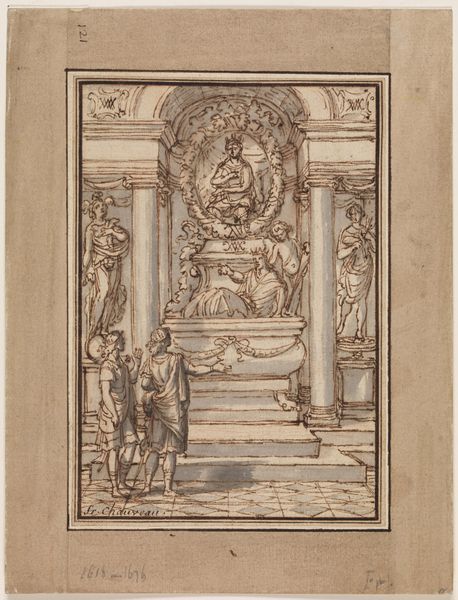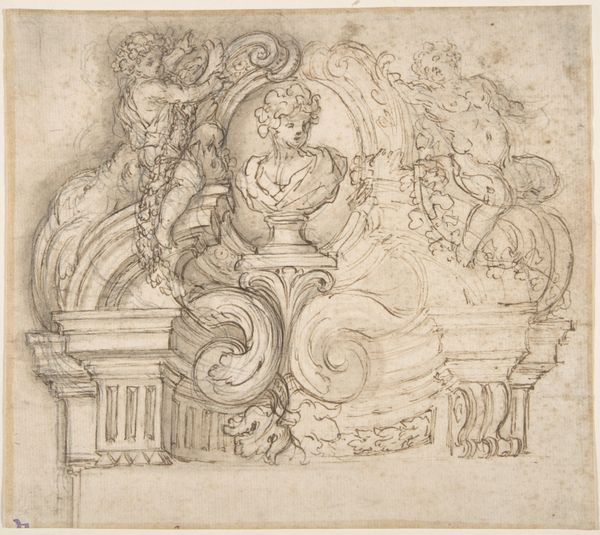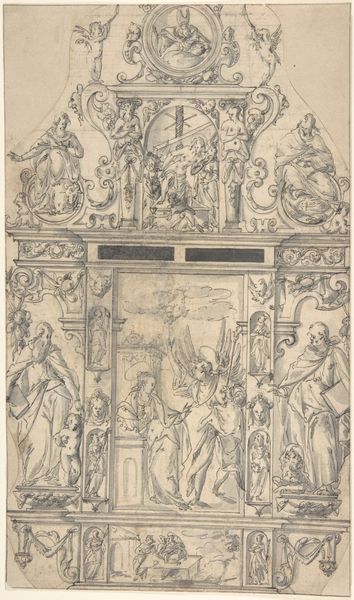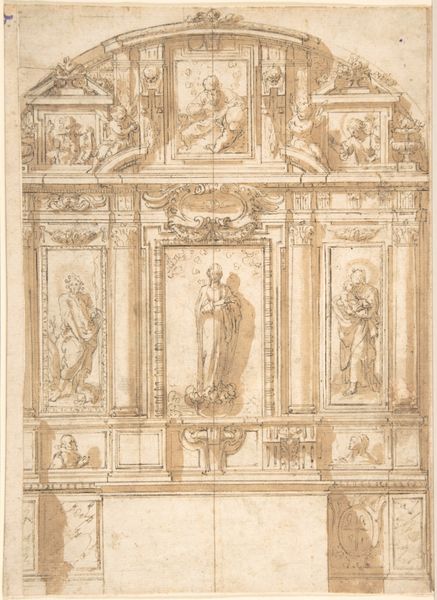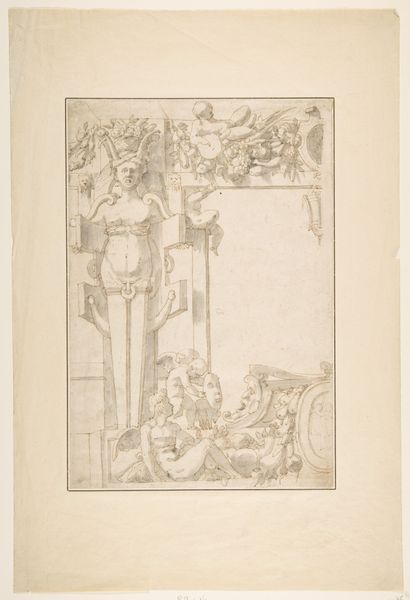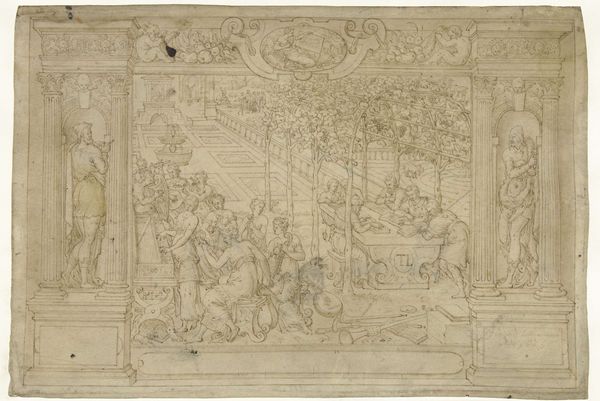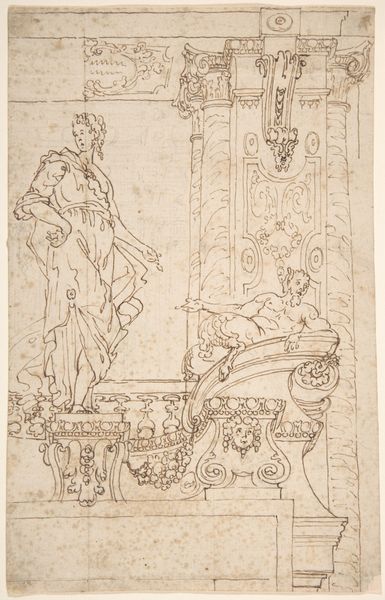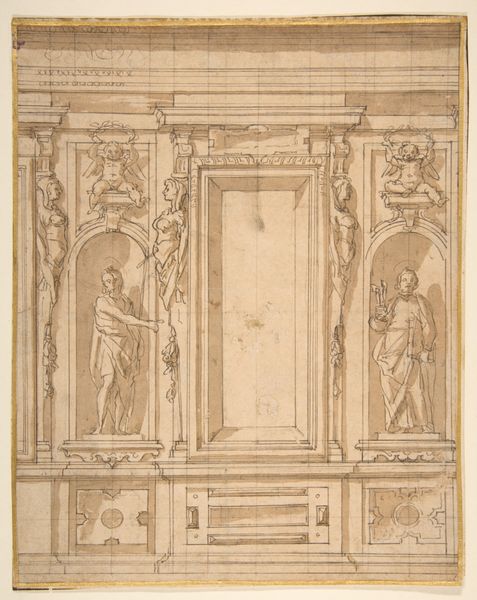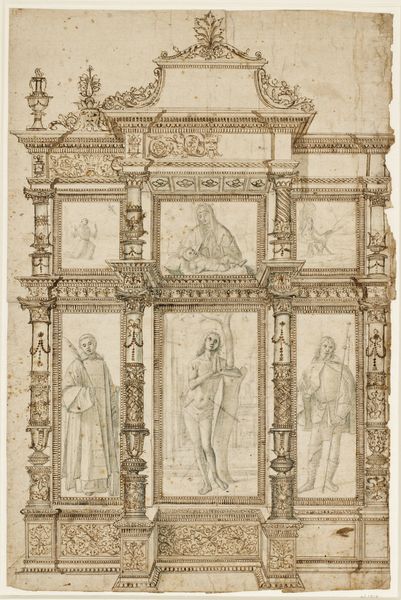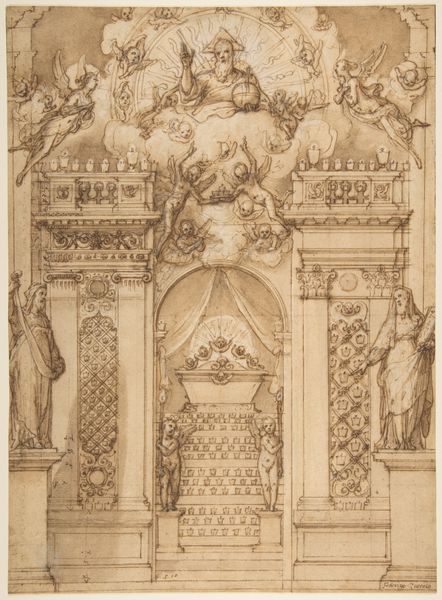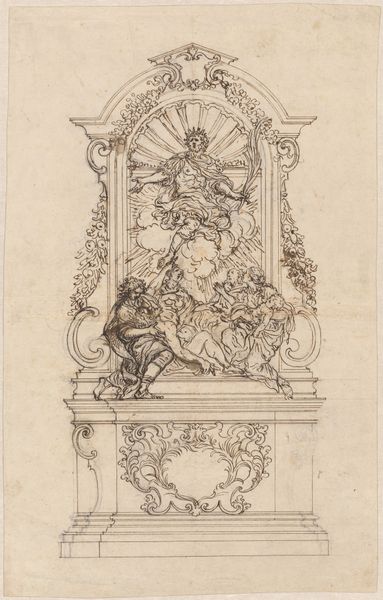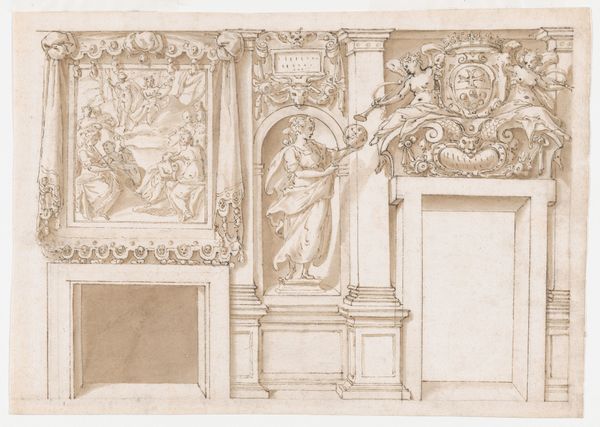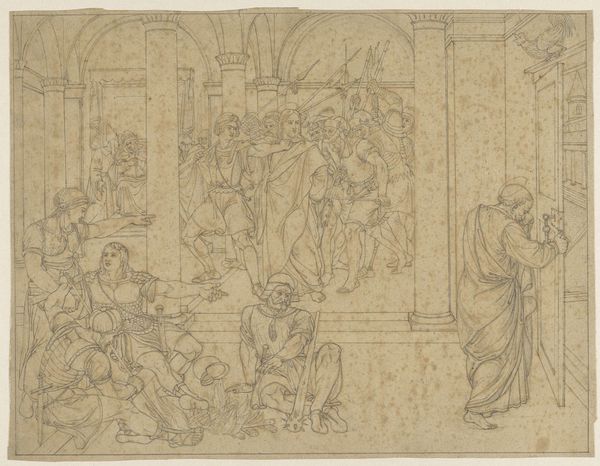
drawing, print, ink, pencil, pen
#
drawing
#
allegory
#
ink painting
# print
#
pen sketch
#
pencil sketch
#
etching
#
figuration
#
11_renaissance
#
ink
#
pen-ink sketch
#
pencil
#
pen
#
history-painting
#
italian-renaissance
Dimensions: 9-5/8 x 7-3/8 in. (24.4 x 18.7 cm)
Copyright: Public Domain
Curator: This sketch, titled "Sketch for Wall Decoration," likely created sometime between 1500 and 1600 by an anonymous artist, immediately strikes me as revealing a whole system of artistic production and values of its time. The materiality of ink on paper serves as a testament to not just skill, but labor and the societal structures which support this labor. Editor: Yes, that makes sense. At first glance, I mostly saw a lot of allegorical figures rendered in pen and ink, with what looks like incredible attention to detail. What else stands out to you? Curator: The very nature of it being a sketch compels us to consider the labor involved. Think of the social implications – was this artist commissioned? Who were they designing this for? Were they free to express themselves, or constrained by their patron's desires, or by the sheer technical mastery of a tradition that can take decades of craftmanship? Editor: It does look like quite the endeavor! Do you think the medium of ink on paper versus, say, painting directly on a wall, speaks to a different kind of accessibility to art at that time? Curator: Absolutely. The shift toward paper, prints and drawings indicates changing consumption habits and expanding availability beyond the elite. It means multiple iterations, versions for different clients maybe. Consider the societal role this artisan and the access he offered his community. Who was given agency with this design? How might interpretations of the wall decorations differ if one belonged to different societal standings? Editor: That is fascinating - thinking about this as an object deeply intertwined with Renaissance economy really reframes the work for me! Curator: Indeed! Reflecting upon these drawings, and seeing them as the starting point in wall decorating reveals something about the exchange between the consumer and the producer in 16th-century design culture. Hopefully that informs your look at other works from that era!
Comments
No comments
Be the first to comment and join the conversation on the ultimate creative platform.
